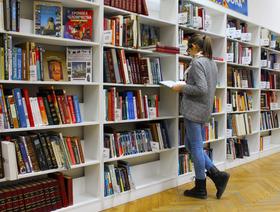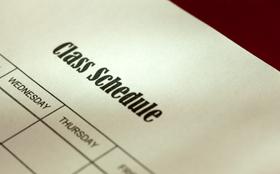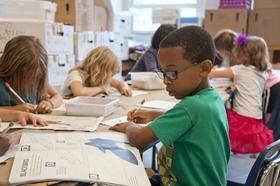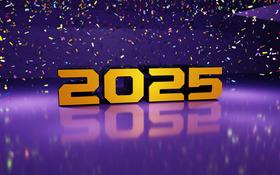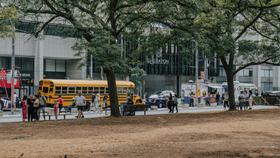U.S. Public vs. Private Schools: 2025 Guide
Choosing between public and private schools remains one of the biggest decisions for U.S. families—and in 2025, the landscape continues to shift. This guide offers a fresh look at how public and private K–12 schools compare today, with up-to-date tuition figures, policy trends, and practical insights for students, parents, and educators.
1. Funding & Tuition
Public Schools
Public schools remain tuition-free for in-district students, funded by a mix of local, state, and federal dollars. According to the National Education Association, inflation-adjusted per-student spending for public schools rose to $17,367 in the 2024–25 school year.
Federal grants remain important: in fiscal 2024, the U.S. Department of Education awarded more than $150 billion for K–12 programs, including Title I and special education. (Pew Research Center)
Private Schools
Unlike public schools, private schools charge tuition—often depending on type and location. For the 2025–26 school year, the national average private school tuition is about $14,999, with elementary schools averaging $14,018 and high schools averaging $17,954.
In more elite or independent settings, the cost is far steeper. According to Bloomberg, day-school tuition rose to approximately $49,284 in 2025, while boarding schools averaged $73,080 amid inflationary pressures. (Bloomberg)
These costs contrast sharply with public school funding, though public dollars still underpin much of K–12 education.
2. Enrollment & Demographics
Public Schools
Public schools continue to serve the bulk of U.S. students. While charter schools have grown, traditional public schools remain widespread and institutionally stable. According to Pew Research, public schools are evenly distributed across rural, suburban, and urban areas. (Pew Research Center)
Private Schools
Private schools are smaller on average: over 44 percent of them enroll fewer than 300 students.
Religious affiliation remains common: nearly 75 percent of private schools are faith-based, with Catholic schools still representing a large slice. (Marketbrief)
3. Academic Environment & Outcomes
Class Size & Student–Teacher Ratio
One of the most frequently cited advantages of private education is smaller class sizes. Many private schools cap classes significantly lower than public counterparts, facilitating more individualized attention. This can contribute to stronger academic engagement, though it's worth noting that outcomes aren’t solely determined by class size.
Curriculum & Autonomy
Private schools enjoy greater curricular freedom, often leveraging this to offer specialized programs, advanced placement courses, or unique extracurricular experiences. Public schools, meanwhile, are subject to state standards and district oversight—but they also have broadened curricular options, especially in districts that prioritize STEM, arts, and career-technical education.
Equity & Access
Private schools may be more selective than public ones, which can limit access. That said, many private institutions offer substantial financial aid. For example, admissions leaders at top independent schools note that the “net cost of attendance can be far less than the sticker price.” (Public School Review)
On the other hand, public schools are legally required to serve all students, including those with special needs or limited resources.
4. Policy Trends & School Choice
Growth of School Choice
Private school choice is surging. Between 2024 and 2025, private school choice enrollment reportedly jumped by 25%, from 1 million to approximately 1.3 million students. (Public School Review)
These options include vouchers, tax-credit scholarships, and Education Savings Accounts (ESAs), which allow families to redirect some public funds toward private tuition.
Education Savings Accounts (ESAs)
While ESAs are available in several states, their funding often falls short of covering full tuition. A Bellwether report notes that many ESA programs provide less funding than the average private tuition rate, leaving families to make up the gap. (Bellwether)
For example, Alabama’s CHOOSE Act, effective for the 2025–2026 year, provides eligible families up to $7,000 for private school tuition or $2,000 for homeschooling. (AP News)
Implications for Public Schools
Some policymakers and educators worry that redirected funding could strain public school budgets. When students use public money for private schooling, districts may lose enrollment and resources. Critics argue this could exacerbate funding inequities, especially in underfunded public school systems.
5. Real-World Parent Perspectives
To illustrate, consider two very different but common scenarios:
Family A, living in a suburban district, sends their child to public school. They benefit from free tuition, strong extracurricular options, and a stable district structure. Their tax dollars support facilities, teacher salaries, and local programming.
Family B, with flexible income or financial aid resources, chooses a private day school. Their tuition of ~$15,000–$20,000 buys smaller classes and more personalized attention. Even so, they rely on financial aid or policy tools like ESAs to make the choice feasible.
These examples reflect broader trends: the decision is rarely one-size-fits-all and depends on family values, finances, and educational priorities.
6. Expert Insights & Emerging Trends
Policy Watch:
Laura Colangelo, Executive Director of the Texas Private Schools Association, emphasized in a 2024 survey that 90% of private schools in Texas said they could welcome more students under a parental choice program, signaling readiness for expansion. (Texas Private Schools Association)
Meanwhile, in states with ESAs or voucher programs, advocates highlight increased access, while opponents raise concerns about public school funding and equity.
Academic Innovation:
A recent six-year academic study found that high school enrollment in computer science courses rose from 10% to 15% between 2018–19 and 2022–23—reflecting growing interest among public high schools in STEM programming. (arXiv)
This suggests that public schools are increasingly investing in high-value courses that were once the exclusive domain of private institutions.
7. Pros & Cons in 2025
| Factor | Public Schools (2025) | Private Schools (2025) |
|---|---|---|
| Cost to Family | $0 tuition, though funded by taxes | Average $14,999/year; elite schools much higher |
| Funding | $17,367 per student (2024–25) nea.org | Tuition, donations, endowments |
| Access & Equity | Open-access by law | Selective; financial aid varies |
| Class Size | Often larger | Generally smaller, more intimate |
| Curriculum Flexibility | State standards | More autonomy, specialized offerings |
| Policy Influence | Stable funding but local variation | Growing choice through ESAs & vouchers |
8. Making the Right Choice
For Parents:
Compare the net cost of private schools—not just sticker price.
Evaluate local public schools’ academic programs, class sizes, and resources.
Research which school-choice options (vouchers, ESAs) are available in your state.
For Educators:
Understand how school-choice policies affect enrollment and resource distribution.
Advocate for transparency in aid and selection practices, especially in private institutions.
Monitor innovations in both sectors—such as public schools enhancing STEM offerings or private schools increasing need-based aid.
For Policymakers:
Balance support for school choice with safeguards to protect public school funding.
Ensure accountability across sectors—transparent budgeting and equitable access matter.
Invest in cross-sector partnerships that leverage strengths of both public and private schools.
Conclusion
As of 2025, the choice between public and private schooling remains deeply personal and complex. Public schools continue to provide stable, tax-funded education, while private schools—though more expensive—offer flexibility, smaller class sizes, and tailored experiences. Policy trends like ESAs are reshaping options, especially for middle-income families. But as the landscape evolves, the best choice often depends on a family's values, financial resources, and long-term goals.
Ultimately, informed decisions come from up-to-date data, thoughtful planning, and a clear sense of what’s most important for your child’s educational journey.



